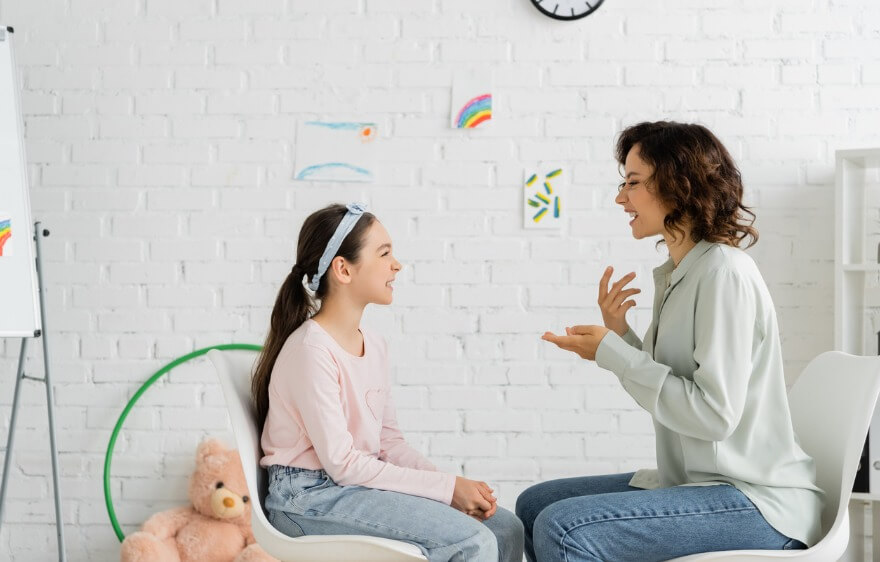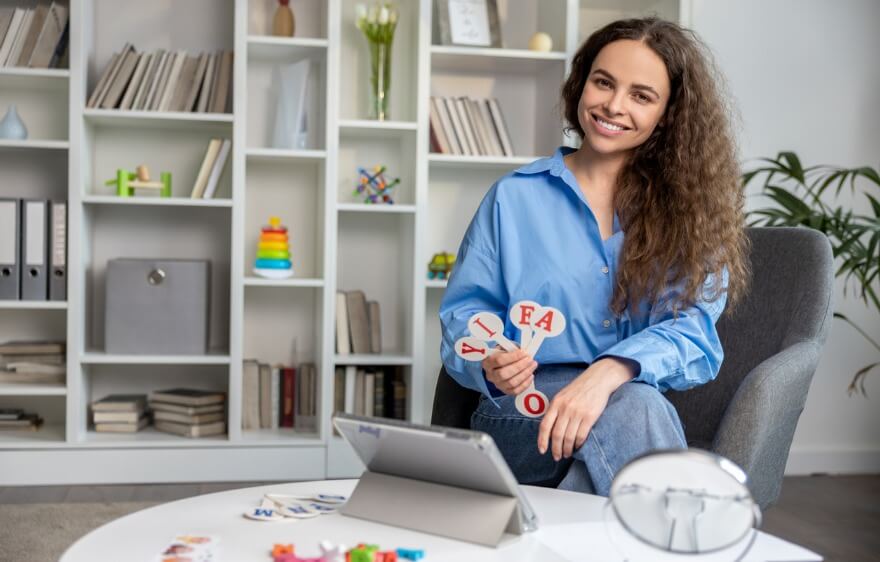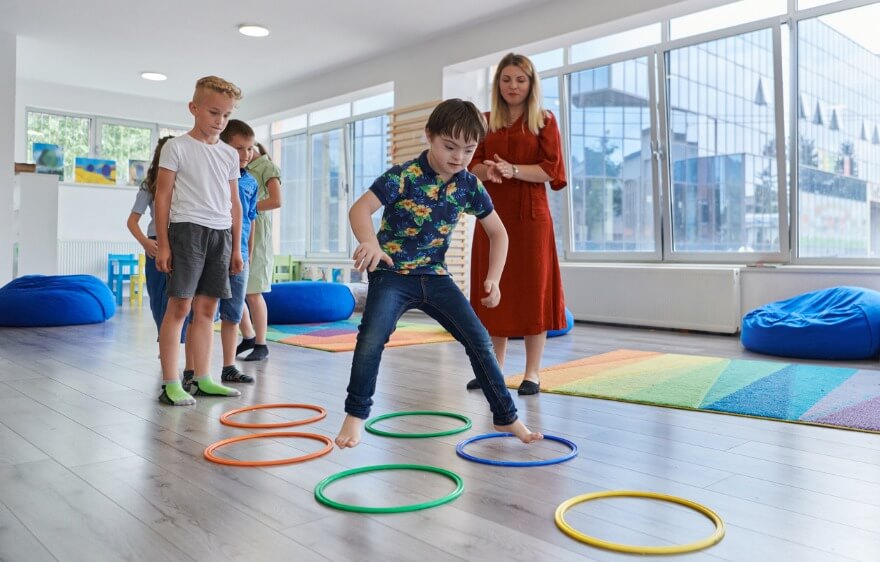If you’ve ever sat down to create a speech therapy lesson plan and found yourself staring at a blank screen or notebook, you’re not alone. Whether you’re a seasoned speech-language pathologist or just starting your career, planning effective and engaging therapy sessions can be one of the most rewarding and creative parts of your job — but it can also be one of the most challenging.
At Care Options for Kids, we understand how crucial a solid plan can be for guiding sessions, tracking progress, and, most importantly, making learning fun for your clients. In this post, we’re diving deep into the building blocks of a great speech therapy lesson plan, offering tips and tools for planning, and sharing five ready-to-use lesson plan ideas that you can adapt to fit your caseload.
Let’s get started!
Why Lesson Planning Matters in Speech Therapy
Speech-language therapy is as much about personalization as it is about structure. No two clients are exactly alike, so a speech therapy lesson plan needs to be flexible while still offering clear goals, methods, and outcomes. Thoughtful planning ensures your sessions are purposeful, goal-driven, and appropriately paced for each client.
Without a plan, it’s easy to fall into a reactive mode, scrambling for materials or activities during the session. But with a good plan, you’ll feel more confident, prepared, and ready to help your clients make real progress toward their speech and language goals.
Basics of a Good SLP Lesson Plan
Before diving into ideas, let’s cover the foundational components that go into an effective speech therapy lesson plan. These can vary slightly based on your setting, but in general, they include:
- Client goals: Speech therapy goals are the backbone of any plan. These should be based on the client’s IEP, evaluation, or therapy progress. Goals may target articulation, language, fluency, voice, or pragmatics.
- Session objectives: These are the specific, measurable objectives you aim to address during the session. Think of these as your short-term targets that support long-term goals.
- Materials needed: Games, books, visual aids, flashcards, or digital tools. Having everything prepped and listed can save valuable time.
- Activities: This is where creativity comes in. Activities should be age-appropriate, engaging, and relevant to client goals.
- Data collection plan: How will you track the client’s progress during the session? Will you be tallying correct productions, using percentage accuracy, or taking notes?
- Homework or follow-up tasks: Reinforcing what was practiced during the session can really accelerate progress. Include a take-home task or caregiver suggestion when possible.
Elements of a Strong Speech Therapy Lesson Plan
So what makes a lesson plan not just good, but great? Here are a few key ingredients:
- Customization: Every client is different. A strong speech therapy lesson plan adapts activities to fit individual age, interests, and communication levels.
- Flexibility: Things don’t always go as expected. Build in room to pivot if an activity doesn’t work out.
- Engagement: Keep it fun! Motivation is a powerful tool in speech therapy. Use interactive tasks that feel more like play than work.
- Structure: While creativity is welcome, a session needs a clear beginning, middle, and end. A consistent routine helps clients know what to expect.
- Progress-oriented: Always circle back to the “why.” Every task should directly support the goals and speech therapy milestones you’ve outlined.
Tips for Creating Impactful Speech Therapy Lesson Plans
Feeling stuck when it comes to planning? Try these simple strategies to spark new ideas and make your speech therapy lesson plan more effective:
- Use themes: Pick a weekly or monthly theme, like seasons, animals, or community helpers. Thematic planning makes it easier to link materials and keep things cohesive.
- Repurpose favorite games: Don’t reinvent the wheel. Classic games like Jenga, Uno, or Connect 4 can be turned into speech practice tools by adding a simple twist.
- Incorporate literacy: Books are a goldmine for targeting vocabulary, comprehension, articulation, and more. Choose high-interest books and build activities around them.
- Try movement-based activities: Not all kids do well sitting at a table. Add movement with scavenger hunts, hopscotch, or obstacle courses while practicing targets.
- Leverage digital tools: There are fantastic apps and online games designed specifically for speech therapy. Use them to supplement your plan when appropriate.
- Plan for mixed groups: If you see groups with varying goals, prep open-ended activities that can be adapted on the fly.
10 Speech Language Therapy Lesson Plan Ideas to Try
Looking for inspiration? Here are some fun and flexible lesson plan ideas that you can tailor to your client’s goals.
1. “All About Me” Lesson Plan
Target Areas: Expressive language, social communication, WH-questions
Start the year off with an “All About Me” session. Have clients share facts about themselves using visual aids or a simple worksheet. Practice asking and answering questions, describing likes and dislikes, and building sentences. This is a great way to bond while targeting key language skills.
Materials: Printouts, crayons, mirrors for articulation practice, picture symbols
2. Articulation Scavenger Hunt
Target areas: Articulation, vocabulary, following directions
Hide target word cards around the room and turn the session into a speech-based scavenger hunt. Clients find the card, say the word using their best speech sounds, and describe the object or use it in a sentence.
Materials: Target sound cards, baskets or bags, clipboards for recording progress
3. Story Time Retell
Target areas: Sequencing, comprehension, grammar
Read a short story aloud, then work together to retell the story using visuals or a story map. Have your client focus on who, what, when, where, and why, using complete sentences. This works wonderfully in both individual and group settings.
Materials: Picture books, story sequence cards, felt boards
4. Speech Sound Smash
Target areas: Articulation, fluency, motor planning
Use playdough or a toy hammer with articulation cards. Each time your client says a target word correctly, they get to “smash” the word. It adds a sensory and motor component to the session and keeps kids engaged.
Materials: Playdough, articulation word cards, timer
5. Virtual Field Trip
Target areas: Vocabulary, describing, expressive language
Take your client on a “virtual field trip” using images or videos from a zoo, museum, or farm. Ask questions about what they see, encourage descriptive language, and introduce new vocabulary words.
Materials: Tablet or computer, themed vocabulary lists, visual supports
6. Feelings and Faces
Target areas: Pragmatics, emotional vocabulary, perspective-taking
Use emoji cards or facial expression visuals to talk about emotions. Ask clients to match expressions to feelings, describe times they felt that way, and role-play appropriate social responses.
Materials: Emotion cards, mirrors, social stories
7. Build-a-Story Workshop
Target areas: Grammar, narrative skills, expressive language
Give your client story-building blocks: characters, settings, and plot prompts. Let them create their own story verbally or by drawing it out. Focus on complete sentences, sequencing, and descriptive details. This is perfect for encouraging creativity while hitting multiple language targets.
Materials: Picture cards, story dice, blank paper or dry-erase boards, prompt jars
8. Speech Sound Sorting
Target areas: Articulation, phonological awareness
Provide a mix of pictures or objects that start with various sounds. Have your client sort them by sound category, then say each word using correct articulation. This is especially effective for targeting minimal pairs or specific phonemes.
Materials: Printable picture cards, baskets or labeled containers, sound cue visuals
9. Barrier Game Bonanza
Target areas: Receptive language, giving directions, listening comprehension
Set up a barrier between you and the client. Each of you has the same materials, like a simple scene or building blocks. Your client gives you directions to recreate a design or picture, and then you switch roles. This works great in groups or one-on-one sessions.
Materials: Identical sets of objects, dividers, printable scenes, or shapes
10. Mystery Bag Descriptions
Target areas: Vocabulary, adjectives, inferencing
Fill a small bag with mystery items. Have your client feel one object without looking and describe it using sensory words. Then, they guess what the object is. This encourages rich language use and builds confidence in describing unfamiliar items.
Materials: Cloth bag, small household or classroom objects, visual descriptors chart
Helping Kids Find Success
Creating a speech therapy lesson plan doesn’t have to be overwhelming. With a bit of structure, a dash of creativity, and a clear focus on your client’s goals, you can design sessions that are both fun and functional. Whether you’re working with preschoolers, school-age kids, or teens, planning ahead gives you the freedom to be more present and playful in the moment.
Remember, a good speech therapy lesson plan is more than just a list of activities — it’s a roadmap for growth. So don’t be afraid to try something new, revisit your favorites, and adapt as needed. The best plans are the ones that meet your clients right where they are and guide them toward where they want to be. We hope these ideas spark your next great session!
Join the Care Options for Kids Team!
Are you ready for meaningful work that comes with benefits and not burnout? Join the compassionate care team that helps children and families live their best lives. Our clinicians provide best-in-class pediatric nursing, therapy, and school-based services. We bring individualized care to children where they live, work, and play. We have opportunities in homes, schools, and clinics across the country.
Apply at Care Options for Kids now. We make it easy to start so you can make a difference as soon as possible.






